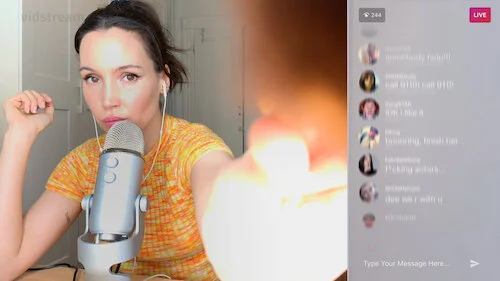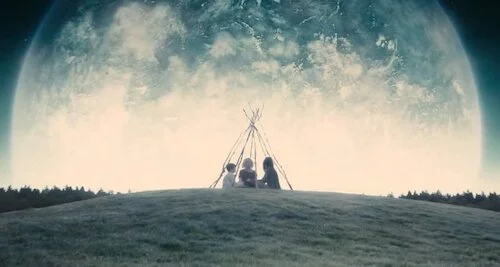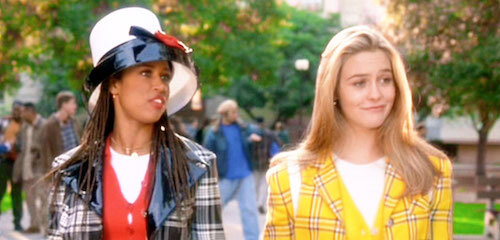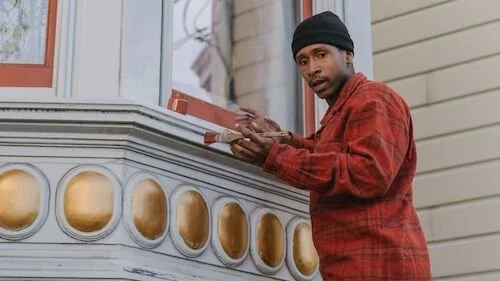Alexandra Serio and Tingle Monsters: The Ingenuity Found in the Horror Genre
Alexandra Serio, photo by Kristiina Wilson.
Alexandra Serio is an upcoming sensation in cinema, who is having quite the breakthrough year. Her latest short Tingle Monsters is a follow up to her 2017 film Change of Plans. Two shorts in, and Serio is already being featured by major short film festivals, including Cinequest, the Oxford Film Festival, the Cleveland International Film Festival, and now Omeleto is featuring the film as well. Tingle Monsters has been receiving rave reviews during its festival circuit runs for its originality and effectiveness. It is a horror film based on online ASMR artists (ASMR is autonomous sensory meridian response: a sensation caused by certain sensed-based triggers that create a calming effect).
With such an imaginative premise and such a poignant message (mistreatment that women face online on a daily basis), Tingle Monsters is an example of a work that redefines the horror genre. Cleverly soothing the viewer with common ASMR methods, Tingle Monsters does something many horror films don’t: it makes you feel at peace rather than uncomfortable. The posts in the sidebar chatroom are also a part of the story, as you get a taste of what real online communities are like. The sidebar starts racing at the opportune time, but the first act is a mixture of you focusing on lead character Dee (played by Serio herself), the chatroom’s messages, and the ASMR sounds that surround you. Tingle Monsters has many things to say about the current state of the cyber society, even in its final impactful shot that wraps up the entire short in an incredible way.
We are honoured to say that we recently discussed the film with Alexandra Serio, and also talked about the innovation that horror provides for film as a whole, as well as some of Serio’s favourite films of her own. We are pleased to be able to share the film with you as well. We personally think it’s a fabulous short, and all of its success thus far is completely warranted.
You can check out Tingle Monsters in the video below, and the film’s official website here. The official Omeleto page for the film can be found here. You can learn more about Alexandra Serio through her IMDb page, her Instagram account, and her Twitter account.
Films Fatale: How did you come up with the unique premise to base a horror film on the digital fad known as ASMR? Do you have your own experiences with ASMR?
Alexandra Serio: I don’t think ASMR is a fad. It’s a huge community that’s been around for about a decade. Maybe a little bit more in some shape or form. I really think it’s something that sprang up as a digital cure to digital maladies, or society. These things that are a product of our online lives. The digital comedown from being online, playing video games, always being “on”. ASMR is often thought of as being sound related, and it certainly is, but there are so many other triggers that are involved in ASMR.The visual triggers usually simulate some form of intimacy: interpersonal contact. I thought that, since a super majority of ASMR artists are female, since they view themselves as these healing practitioners (trying to help people with insomnia, general anxiety and all of these maladies of the modern age), I thought it would be really fertile grounds to create a horror narrative about women’s treatment online, and how that treatment leaks over into real life.
FF: I’m guessing you saw many parallels between how horror utilizes sound and visual cues with what you have with ASMR. This hypnotic lull that makes someone vulnerable, but how you can connect this sensation to a horror film.
AS: I love the horror genre. I think it is really interesting… within a horror narrative, you can have comedy, titillation, fear factor, drama, all pulled from the same narrative. It makes it a very complexed genre that moves the filmmaking world forward. It’s often forgotten when it comes to legacy and awards, like the Academy Awards… It’s kind of one of those genres that moves the medium forward as a whole. Horror is a great medium for allegories. There’s nothing super deep happening in the narrative in Tingle Monsters. It is pretty face value, especially as we end it. But it’s a good starting place for a dialogue about how violence against women begins with words.
FF: Do you think ASMR is interpretational, where we are offered these tingling sounds but it’s up to the listener to interpret audibly what’s going on? Perhaps that’s why it’s such a connective experience in the same way horror films are.
AS: Yeah. It’s a very subjective experience. I think a lot of people who watch ASMR videos don’t necessarily “tingle”. They just find them very relaxing. There’s the minority — I think about twenty percent of people — that actually do feel the tingling sensation that is associated with ASMR.
A shot from Tingle Monsters.
FF: You brought up how Tingle Monsters is important for the female voice. How do you view female filmmaking now, and how it’s being received?
AS: I think filmmaking is one of the most empathic mediums. You create a narrative where the person watching is able to put themselves in the shoes of the protagonist. The more that we have female gaze and female representation behind the scenes, it’s certainly for the better. That goes for everything. That goes for people of colour, that goes for people with different gender representations, that goes for people of different abilities. The more that we tell these narratives, the more it starts a dialogue. Crip Camp comes to mind recently [writer’s note: Crip Camp: A Disability Revolution is a Netflix documentary about the unity of youths with disabilities throughout the United States before and during the eventual creation of the Americans with Disabilities Act]. We don’t see a lot of stories about people with different abilities. Call Me By Your Name. There’s certainly love stories about same sex partners, but it’s so meaningful when it happens. All of these different types of representation are very important. Not just women, but all of this myriad of voices, creating content to tell stories about their perspectives.
FF: It provides for a more diverse array of stories. Call Me By Your Name is similar to stories we’ve heard before. But, since it’s told by a different perspective, it feels refreshing: it’s a side of love that we’re not used to.
AS: There are so many people who are hetero who watched that film and were fully absorbed by the love story, and the really beautiful romantic otherworldly storytelling. A lot of people want to live in that world. That’s why creating content from a diverse array of creators — it is financially viable. The general public engaged with that movie so much so that there’s a sequel [being worked on]. Ten years ago, maybe that movie would have been made, but the response may not have been as embracing of the narrative of this arthouse film. Now, it feels like it’s a big film. It’s a big cultural phenomenon. Times are definitely changing, but I do believe that this is still the beginning.
FF: Going back to Tingle Monsters, it’s interesting because it’s not the first time I’ve heard of a horror film that connects to people through their computer screens. The Blumhouse production Cam is something else that comes to mind. Do you think we’re entering a new vulnerable cyber-territory with horror films, because of people who utilize their computers all the time? Is there this untapped well of stories like Tingle Monsters where it’s people being attacked in the luxury of their own homes through their computers?
AS: Yes. We live in this digital world. A large percentage of people now spend their time (eight to ten hours a day) staring at a computer screen (and then potentially even more at their phone screen). I think this is a phenomenon (screen life formats) that’s going to happen more and more, because it’s becoming more of people’s day-to-day realities. I do think that computer-based screen life format horror films… we will see more of them.
The poster for Tingle Monsters.
FF: How difficult is it to successfully create a horror short, since horror is based on a lot of build up? Were there any confinements with making this a short?
AS: I really wanted this film to look, feel and sound like an ASMR livestream. I shot it on an iPhone XS. The cast and crew were three people. We did it in five hours. The film's actually two takes stitched together. It’s supposed to look like one shot but it’s two shots that we used. I think the whole purpose of shooting it in a way that looks like a livestream was to transplant the viewer into a scenario that they're already familiar with, which is the harassment of women online. The less you have to fake, the better. The film doesn’t feature any score. I showed early viewings to friends that are filmmakers and producers. They said “You might want to think about adding a backing track, or heightening certain things with sound design…” I said “No.” That’s not the point. This has to be a vérité experience because people have seen this. They’ve seen these comments roll in. I want them to not question reality with what we’re creating. To answer your question “was it hard to create a short that sustains tension and chaos”? I think in this scenario, where you’re trying to really present something like a vérité experience, it's not hard. These things happen. It’s just maybe a condensed narrative, a bit.
Short films are really hard to pull off. The term “short film” is kind of… (laughs) a dirty word. Trying to get somebody to watch a “short film” is very hard, because it’s hard to do well. It’s hard to condense a narrative and make people feel something in ten minutes. As a filmmaker, no matter who you are, if you're a short filmmaker or someone working in features… you’re always up against time and budget restraints. I tried to reinvent the genre a little bit. I wanted it to feel very vérité. I wanted to experiment. I think the things that interest me is questioning what film looks like. There are so many great filmmakers out there that can make a perfect film. Martin Scorsese is infinitely capable of making a perfect film. The Irishman was wonderful. Alfonso Cuarón. Roma was a perfect film. But that feels like a very 20th century art to me. What does 21st century film look like? That's the space that I want to move in.
FF: We like to send interviews off with the most basic question, based on why we are all cinephiles. What are your top films of all time, and why?
Hedwig and the Angry Inch
AS: I really love Hedwig and the Angry Inch. I love that film. I saw that film when I was in middle school. It just blew my mind with the songwriting, and the narrative of a trans person making their way, and falling in love told through music… told like a Greek tragedy almost, but that’s the tragic ending. I really love Hedwig and the Angry Inch. I got to see it on Broadway during its revival. It was a very special experience.
Melancholia
AS: I love Lars von Trier. I think he’s very interesting. That film I like to watch at least once a year.
Phantom Thread
AS: I love Phantom Thread. Phantom Thread really messed me up when it came out (laughs). I was really depressed for two weeks. I remember after seeing it thinking "Oh man, I'll never make something this good.” Ever. (laughs) I still feel like that every time I watch it. It's such a beautiful world that you want to inhabit. I love films that are maybe not perfect, but they're worlds that I want to live in.
Party Girl
AS: I think it's such a fun film. I love Parker Posey. That's a world I want to live in.
Clueless
AS: Similarly, Amy Heckerling's Clueless. Such a great, timeless narrative, but told with such an attention to detail. It's very of-the-moment.
The Last Black Man in San Francisco
AS: I really liked that. I thought it was a languid and beautiful world that I wanted to live in as well. A fair share of films I enjoy are the moods that they create that you want to step into There's a bunch of textbook films out there that are works of art and show true mastery. What really gets me thinking about film is the mood.
Andreas Babiolakis has a Masters degree in Film and Photography Preservation and Collections Management from Ryerson University, as well as a Bachelors degree in Cinema Studies from York University. His favourite times of year are the Criterion Collection flash sales and the annual Toronto International Film Festival.











